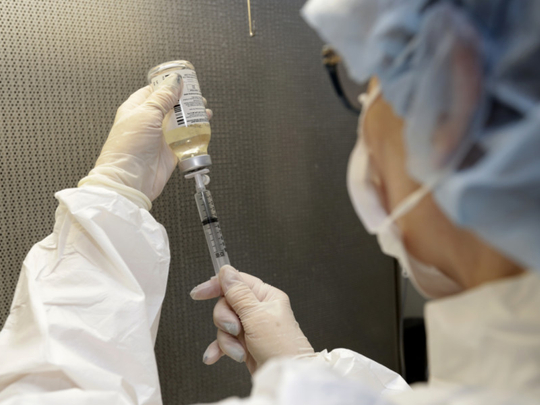
The influenza season is just getting started in the United States, and it already promises to be more severe than usual. Hospital emergency rooms are filling up with flu sufferers, and pharmacies have reported medicine shortages. Twelve children had died as of last month. To make matters worse, in Australia, which experienced its flu season four to six months ago, the current vaccine appeared to be only about 10 per cent effective against this year’s dominant strain.
Yet, as bad as this winter’s epidemic is, it won’t compare with the flu pandemic that is almost certainly on the horizon if we don’t dedicate energy and resources to a universal vaccine.
Influenza pandemics occur when a novel animal flu virus acquires the ability to infect humans and they, in turn, transmit it to other humans. The 1918-1919 Spanish flu epidemic (which despite the name may have originated in the American Midwest) killed 50 million to 100 million around the globe. Accounts at the time described people falling ill in the morning and dying that night.
Given the century of medical progress since then, one might conclude that we are far better prepared today to deal with such a worldwide catastrophe. Unfortunately, the opposite is true. The world has about four times the number of inhabitants it did in 1918, including hundreds of millions of people, poultry and pigs living close together. This provides a potent biologic mixing bowl and natural influenza virus mutation factory. What’s more, nearly any point on the planet is accessible to any other point within hours, and there are more than a billion international border crossings each year. The virus will spread rapidly.
When a pandemic does strike, people in America will be in trouble in part because American hospitals and pharmacies keep in stock no more than a few days’ supply of most life-saving drugs — almost all of which are made in Asia. Worldwide manufacturing and shipping are highly susceptible to disruption, which could mean shortages in many areas.
During the 2016-2017 flu season, 759 Chinese — who had been in contact with infected poultry — were stricken; 281 of them died. While H7N9 still is rarely transmitted human to human, it may be just one spin of the genetic roulette wheel away from mutations that could make it the next human pandemic strain.
We are not prepared. Our current vaccines are based on 1940s research. Deploying them against a severe global pandemic would be equivalent to trying to stop an advancing battle tank with a single rifle.
Emergency response
The only real solution is a universal vaccine that effectively attacks all influenza A strains, with reliable protection lasting for years, like other modern vaccines. Although the National Institutes of Health has publicly declared developing a vaccine a priority, it has only about $32 million (Dh117.69) this year specifically for such research. The Biomedical Advanced Research and Development Authority, the other federal agency responsible for developing and making available new vaccines for emergency response, has, in fiscal year 2017, only a single project for $43 million supporting game-changing influenza vaccines. By contrast, the search for an HIV vaccine — still a scientific long shot — receives $1 billion annually (which it should). We estimate that international governments, vaccine manufacturers and the philanthropic community must make a similar commitment to influenza vaccine research if the kind of vaccine we need is to be developed in the next 10 years.
But there is no apparent effort to make these vaccines a priority in the current administration of the United States. Its national security strategy published last month cites Ebola and Sars as potential bioterrorism and pandemic threats, yet makes no mention of the risk of pandemic influenza nor any aspect of critical vaccine research and development. The eradication of smallpox in the 1960s and 1970s was arguably the greatest achievement in the annals of public health. We have the tools to potentially accomplish this with influenza, and with the stakes as high as they are, isn’t it worth a Manhattan Project-scale effort to defend ourselves? The next few weeks will highlight how ill-prepared we are for even “ordinary” flu. A worldwide influenza pandemic is literally the worst-case scenario in public health. Yet, far from an unthinkable occurrence. Unless we make changes, the question is not if but when it will come.
— New York Times News Service
Michael T. Osterholm is a professor and director of the Centre for Infectious Disease Research and Policy at the University of Minnesota. Mark Olshaker is a writer and documentary filmmaker. They are the authors of Deadliest Enemy: Our War Against Killer Germs.










